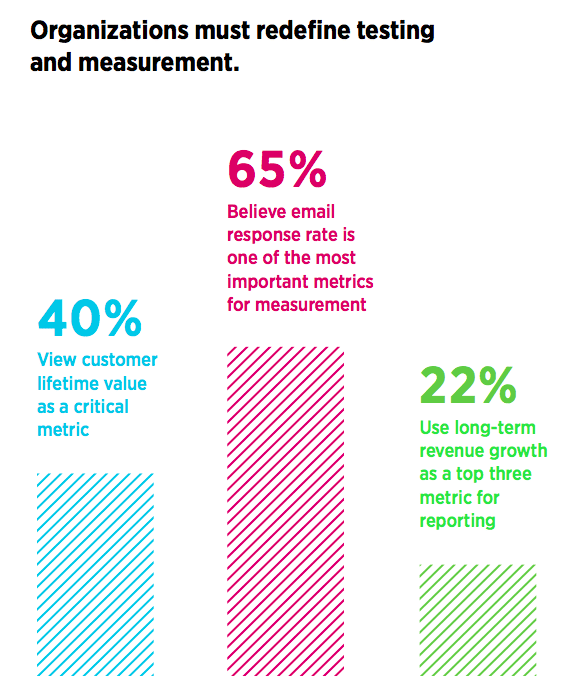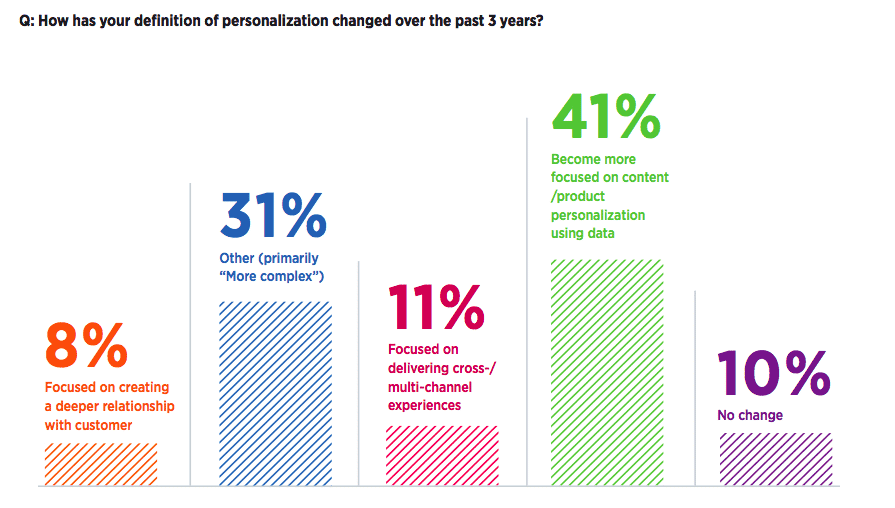Article
Personalization, Customer Lifetime Value, and Why Just About Everyone is Measuring It Wrong
October 18, 2018

How do you know if your personalization strategy is working?
It sounds like a simple question. After all, there are no shortage of metrics to measure the effectiveness of any particular communications campaign.
And that’s precisely the problem. In an environment where marketers are constantly pressured to show short-term results, it’s all too tempting to use short-term metrics to illustrate just about everything — including the power of personalization. As a result, too many organizations use campaign-specific and channel-specific metrics to show the impact of personalization.
But personalization is neither campaign-specific nor channel-specific. It’s the exact opposite. Personalization is about the savvy use of data and communications to build stronger relationships with customers over time. It’s about building brand loyalty so that each individual customer becomes more likely to give a bigger share of their business to the brand. Look at Ulta; the largest beauty retailer in the U.S. can attribute more than 90% of its sales to members of the Ultamate Rewards loyalty program.

Instead of clickthrough rates, open rates or even traffic, it’s about customer lifetime value.
When Sailthru asked 146 marketing executives in retail, ecommerce, media, and publishing how they measure the success of their personalization efforts, the most popular answer was email response rates. For 65% of marketers, this was one of their most important metrics for measuring personalization. Right after email response rates was site engagement, with 56% of marketers choosing this as one of their most important metrics for measuring impact.
Customer Lifetime Value and the New Personalization Paradigm
By contrast, customer lifetime value came in at only 40%.

It’s worth noting that marketers who saw personalization as a strategy, rather than a tactic, were more likely to measure their success using long-term customer value metrics. They were more than twice as likely to choose long-term revenue growth and churn rate as key metrics. At the same time, they were less likely to cite email response and purchase conversion.
We understand that marketers who are new to personalization may need some time to get their heads around the idea of measuring its effectiveness on a cohort basis. But it’s imperative that they do so.
A brand might run an email campaign that appears to hit it out of the park on all the usual metrics, from open rates all the way through to purchase conversion. But if that campaign was paired with a significant discount, it may not have done much to increase the value of participating customers. Even without a discount, the campaign may simply have prompted customers to buy sooner than they otherwise would have. That’s good, of course, but it’s a lot different than increasing the shopper’s overall spend.
To understand how personalization is really making a difference, marketers need to look at customer lifetime value. And they need to be doing it for long enough to make sure that lifetime value means something. Lifetime value might be a year, but except for brands that experience very high repeat purchase rates, and very high churn, it can’t be a month or two. Marketers need to measure customer engagement, and purchasing, over the long term.
Changing Perceptions; Enduring Goals

Another way see this is to look at how marketers believe personalization has changed over the past three years. Eighty percent said personalization has become more complex. Even though they were rarely able to define exactly how personalization has become more complex, they knew that it had. That’s a reasonable-enough response, given all the conflicting marketplace chatter about personalization.
Some 41% of marketers said they’ve become more focused on recommendations in the past three years, and 11% said they’re paying more attention to delivering cross-channel experiences. But only 8% said they’re more focused on creating a deeper relationship with the customer.
Ironically, in the long term, that’s what personalization is all about. It’s not about tactics, although of course those are important. It is, in the end, about a stronger, more profitable customer relationship. And the only metric that really measures that, and shows whether or not it has improved, is customer lifetime value.
The State of Brand Loyalty in the U.S. in 2023
Related



